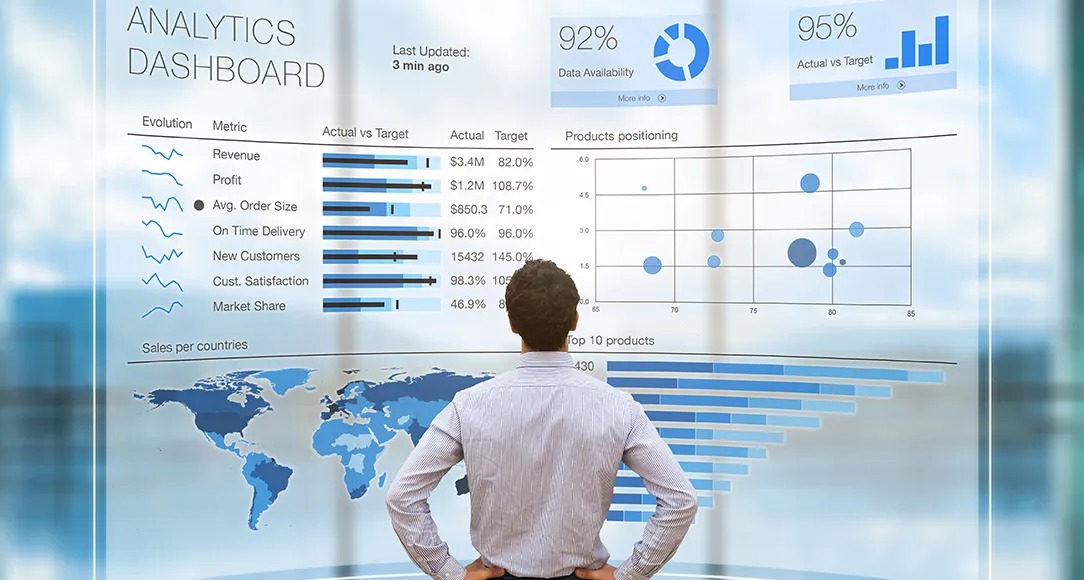What is Reporting? A Comprehensive Overview
In today’s data-driven world, organizations are inundated with vast amounts of information. The ability to distill this data into actionable insights is paramount for effective decision-making. Reporting serves as a fundamental practice in this process, allowing businesses to present data in structured formats that summarize key metrics and performance indicators (KPIs) over defined periods. This blog post delves into the intricacies of reporting, its benefits, the reporting process, various types of reports, and the relationship between reporting and analytics.
Understanding Reporting
At its core, reporting is the systematic presentation of data, designed to provide a snapshot of an organization’s performance. Reports are not merely collections of data; they are crafted to inform stakeholders—be they executives, managers, or team members—about the state of the business. Reporting can be categorized into two main types: scheduled reports and ad hoc reports.
- Scheduled Reports: These reports are automated and generated at regular intervals, ensuring that stakeholders consistently receive updated information. They are often used for performance tracking and compliance purposes, providing a reliable framework for monitoring ongoing operations.
- Ad Hoc Reports: In contrast, ad hoc reports are created on-demand to address specific inquiries or urgent issues. This flexibility allows organizations to delve deeper into particular aspects of their data, enabling them to respond swiftly to emerging challenges or opportunities.
Data visualizations play a crucial role in reporting. By transforming raw data into graphs, charts, and other visual formats, organizations can more intuitively identify trends, patterns, and anomalies. Dashboards, in particular, are instrumental in presenting real-time data, enabling stakeholders to make quick and informed decisions based on current performance metrics.
The Benefits of Reporting
Effective reporting offers numerous benefits that extend beyond mere data presentation:
- Informed Decision-Making: By providing clear insights into performance metrics, reporting empowers decision-makers to act based on evidence rather than intuition. This data-driven approach enhances the quality of decisions made at all levels of the organization.
- Performance Tracking: Regular reporting allows organizations to track performance trends over time, helping to identify areas of improvement and success. This continuous monitoring is essential for maintaining competitive advantage and operational efficiency.
- Transparency and Accountability: Reporting fosters a culture of transparency, as stakeholders can see the data behind decisions. This accountability can enhance trust within teams and with external stakeholders, leading to a more cohesive organizational environment.
- Alignment with Strategic Goals: Reporting helps ensure that day-to-day activities align with broader strategic objectives, allowing organizations to optimize resource allocation effectively. This alignment is crucial for achieving long-term success.
- Regulatory Compliance: Many industries are subject to regulatory requirements. Regular reporting ensures that organizations remain compliant with legal standards, reducing the risk of penalties and reputational damage.
- Risk Identification and Mitigation: By analyzing data through regular reports, organizations can identify potential risks early and take steps to mitigate them. This proactive approach to risk management is essential in today’s fast-paced business landscape.
- Enhanced Communication: Reporting facilitates communication between departments and stakeholders, ensuring that everyone is on the same page regarding performance and objectives. This clarity can lead to improved collaboration and efficiency.
- Competitive Advantage: Organizations that leverage reporting effectively can gain insights that inform strategic decisions, helping them stay ahead of competitors. By understanding market trends and customer behaviors, businesses can adapt more swiftly to changes in their environment.
- Long-Term Strategic Planning: Reporting supports long-term planning by providing historical data and trends that inform future strategies. This foresight is invaluable for navigating the complexities of market dynamics and consumer preferences.
The Reporting Process
The reporting process is a systematic flow of data from operational sources to actionable insights. Below is a simplified overview of this process:
- Data Sourcing: Data is sourced from operational systems, including transactional databases, supply chain management systems, and customer relationship management (CRM) applications. This initial step is critical, as the quality and relevance of the data sourced will directly impact the effectiveness of the reporting.
- Data Extraction and Transformation: This raw data is extracted, transformed, and combined into a centralized repository, such as a data warehouse or data lake. This consolidation provides a holistic view of the organization’s performance and ensures that data is clean and usable for reporting purposes.
- Reporting Tools: Analytical tools utilize the aggregated data to create reports. These tools can range from simple spreadsheet applications to sophisticated business intelligence platforms that offer advanced analytics capabilities. The choice of tools often depends on the complexity of the data and the specific reporting needs of the organization.
- Report Creation: Once the data is processed, reports are generated. This step involves selecting the appropriate metrics, visualizations, and formats that will best convey the information to stakeholders. The design of the report should prioritize clarity and usability, ensuring that the insights are easily digestible.
- Distribution: After reports are created, they need to be distributed to the relevant stakeholders. This can be done through automated email distributions, online dashboards, or internal portals, depending on the audience and the urgency of the information.
- Feedback and Iteration: The reporting process is not static; it requires ongoing feedback from users to ensure that the reports meet their needs. Organizations should regularly review and refine their reporting processes and tools to adapt to changing business requirements and technological advancements.
Types of Reports
Reporting can take various forms, each serving different purposes and audiences. Some common types of reports include:
- Operational Reports: These reports focus on the day-to-day operations of the organization, providing insights into efficiency, productivity, and performance metrics. They are essential for managers and team leaders.
- Financial Reports: Financial reporting involves summarizing an organization’s financial performance and position. This includes income statements, balance sheets, and cash flow statements, which are critical for stakeholders such as investors, regulators, and management.
- Sales Reports: Sales reports track sales performance over time, analyzing metrics such as revenue, conversion rates, and customer acquisition costs. These reports are vital for sales teams and executives looking to optimize sales strategies.
- Marketing Reports: Marketing reports evaluate the effectiveness of marketing campaigns and initiatives. They analyze metrics such as website traffic, lead generation, and return on investment (ROI), helping marketers refine their strategies.
- Project Reports: These reports provide updates on specific projects, detailing progress, challenges, and resource allocation. They are essential for project managers and stakeholders to ensure that projects stay on track.
- Compliance Reports: Compliance reporting ensures that organizations adhere to regulatory requirements. These reports often involve audits and assessments that verify compliance with laws and standards.
The Relationship Between Reporting and Analytics
While reporting focuses on presenting data, analytics delves deeper into interpreting that data to uncover insights and drive decision-making. The two practices are complementary and often intertwined. Reporting provides the foundational data that analytics relies on, while analytics enhances reporting by offering advanced insights and predictive capabilities.
The Role of Analytics in Reporting
- Descriptive Analytics: This form of analytics helps organizations understand past performance by summarizing historical data through reports. It answers questions about what happened and why, providing context for stakeholders.
- Diagnostic Analytics: By identifying causes behind trends and anomalies, diagnostic analytics complements reporting by explaining the reasons behind certain performance metrics. This deeper understanding can inform corrective actions.
- Predictive Analytics: Predictive analytics uses historical data to forecast future performance. By integrating predictive models into reporting, organizations can anticipate trends and make proactive decisions.
- Prescriptive Analytics: This advanced form of analytics suggests actions to optimize outcomes based on data analysis. By incorporating prescriptive insights into reports, organizations can provide actionable recommendations to stakeholders.
Conclusion
In conclusion, reporting is an essential practice for organizations seeking to navigate the complexities of today’s data landscape. By systematically presenting data, organizations can empower stakeholders with the insights they need to make informed decisions, track performance, and align with strategic goals. As businesses continue to evolve, the integration of reporting and analytics will play a pivotal role in driving success and fostering a culture of data-driven decision-making. Embracing effective reporting practices not only enhances operational efficiency but also positions organizations to thrive in an increasingly competitive environment.

